Bioluminescence, the ability of organisms to emit light, is one of nature’s most mesmerizing phenomena. Several sea creatures boast this enchanting trait, from the deep ocean floors to the coastal waters. This natural light show is not only beautiful but also plays a vital role in communication, camouflage, and predation.
1. The Mesmerizing Glow of the Jellyfish
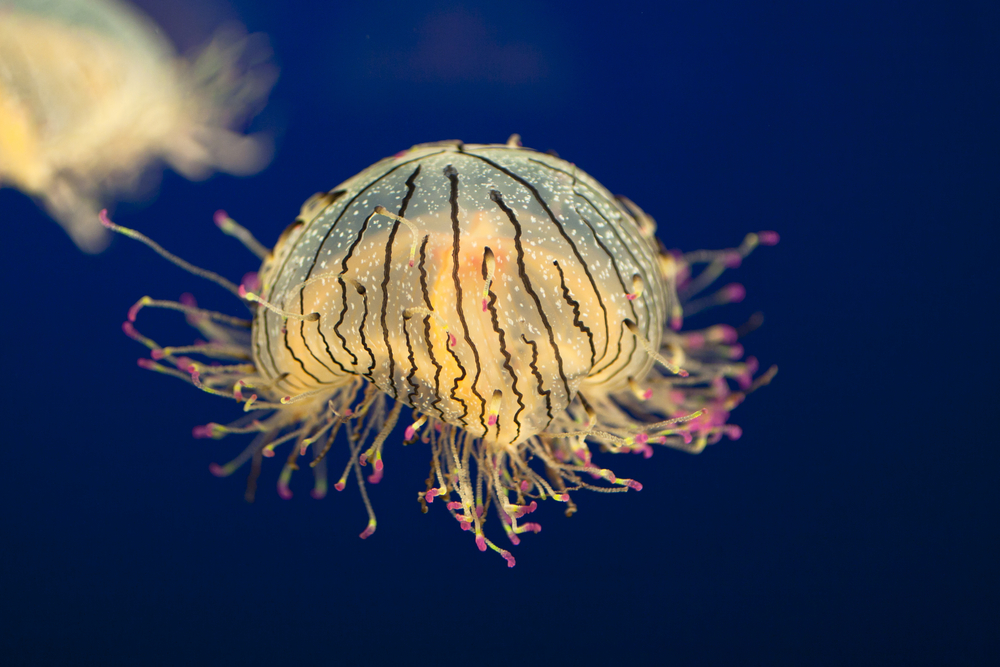
Jellyfish are perhaps the most iconic glow-in-the-dark sea creatures. Their translucent bodies are adorned with bioluminescent cells that emit an ethereal glow. This light is primarily used for self-defense, as the sudden flash of light often deters predators. The jellyfish’s glow can also attract prey, luring them into their tentacles. According to National Geographic, certain species like the crystal jellyfish have a protein called GFP (green fluorescent protein), which has been revolutionary in scientific research, according to The University Of California.
Interestingly, the luminosity of a jellyfish varies depending on the environment. In the pitch-black depths of the ocean, their glow is a guiding beacon. On the other hand, in shallower waters, the light can seem almost invisible. Their beauty, combined with their deadly sting, makes jellyfish one of the ocean’s most fascinating creatures. Their ethereal glow is a reminder of the mysteries the ocean holds, making them a true wonder of the marine world.
2. The Enigmatic Anglerfish and Its Luring Lantern
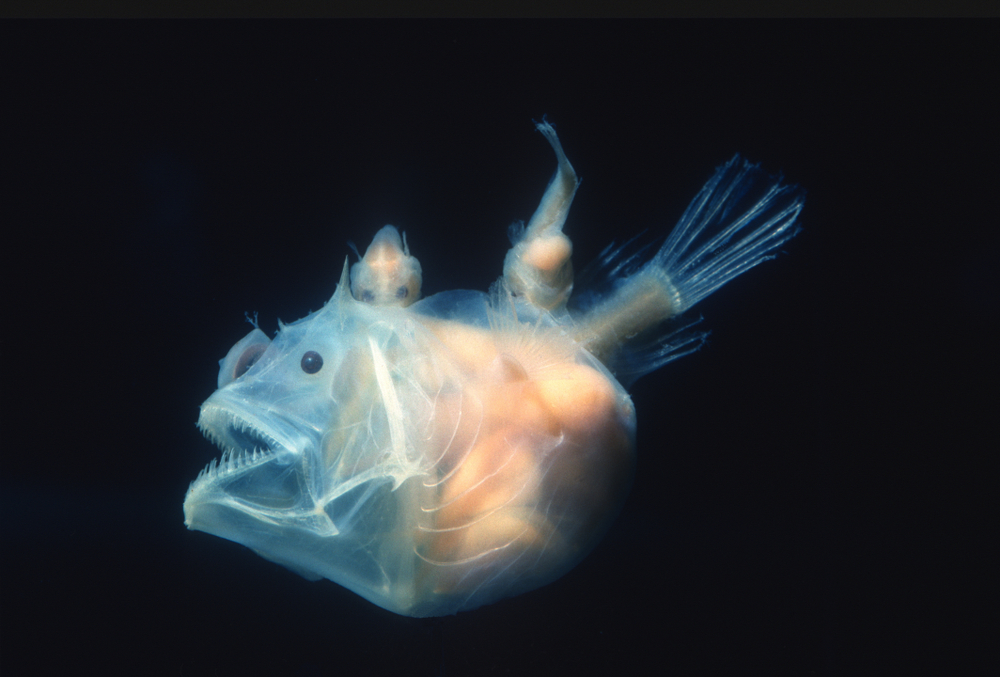
The anglerfish is perhaps best known for its unique hunting strategy, which involves a bioluminescent lure that dangles in front of its mouth. This eerie glow is produced by bacteria living inside the lure, which attracts unsuspecting prey to its jaws. Found in the dark depths of the Atlantic and Antarctic Oceans, the anglerfish can emit a blue-green light that matches the surrounding water, making it invisible to its prey, according to the Smithsonian Ocean Portal. This adaptation is essential for survival in the deep, dark environment where sunlight does not reach.
Despite its fearsome appearance, the anglerfish’s glowing lure is incredibly delicate. It’s fascinating to note that female anglerfish are the ones that possess this light-emitting adaptation, while males are much smaller and non-luminous. The light organ, or esca, of the anglerfish, can be moved in different directions, allowing it to mimic the movements of small prey. This not only attracts potential food but also confuses predators. The anglerfish’s glow is a testament to the incredible adaptations that sea creatures have developed to thrive in their unique environments.
3. The Vibrant Display of Firefly Squid
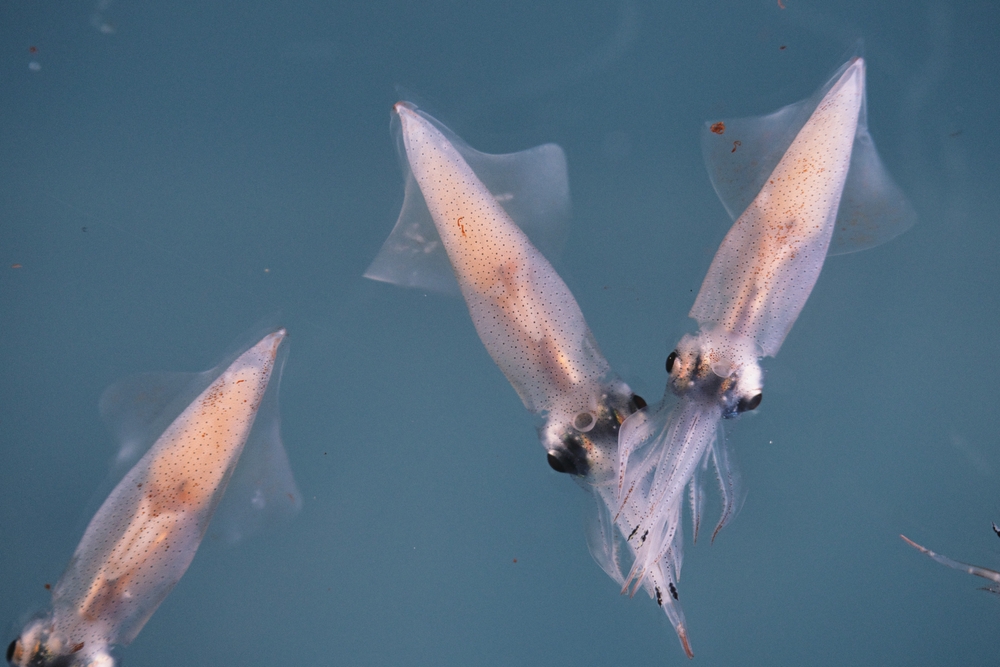
The firefly squid, native to the waters of Japan, is a creature that lights up the sea with its extraordinary bioluminescence. These tiny squids, only about three inches long, possess light-producing organs called photophores on their tentacles and body. These photophores allow them to communicate with each other and startle predators. During the breeding season, which occurs from March to June, they ascend to shallower waters, creating a stunning, glowing spectacle that attracts tourists worldwide. As reported by the BBC, the firefly squid’s light show is not just a visual delight but also plays a crucial role in their mating rituals.
Interestingly, the firefly squid’s glowing ability can be precisely controlled, allowing them to create complex patterns and signals. This intricate light display is used during mating to attract partners and during hunting to illuminate and confuse prey. Their bioluminescence is a perfect blend of beauty and utility, showcasing nature’s creativity in survival strategies. The firefly squid is a remarkable example of how bioluminescence can transform the ocean into a living canvas of light and color.
4. The Subtle Glow of the Lanternfish
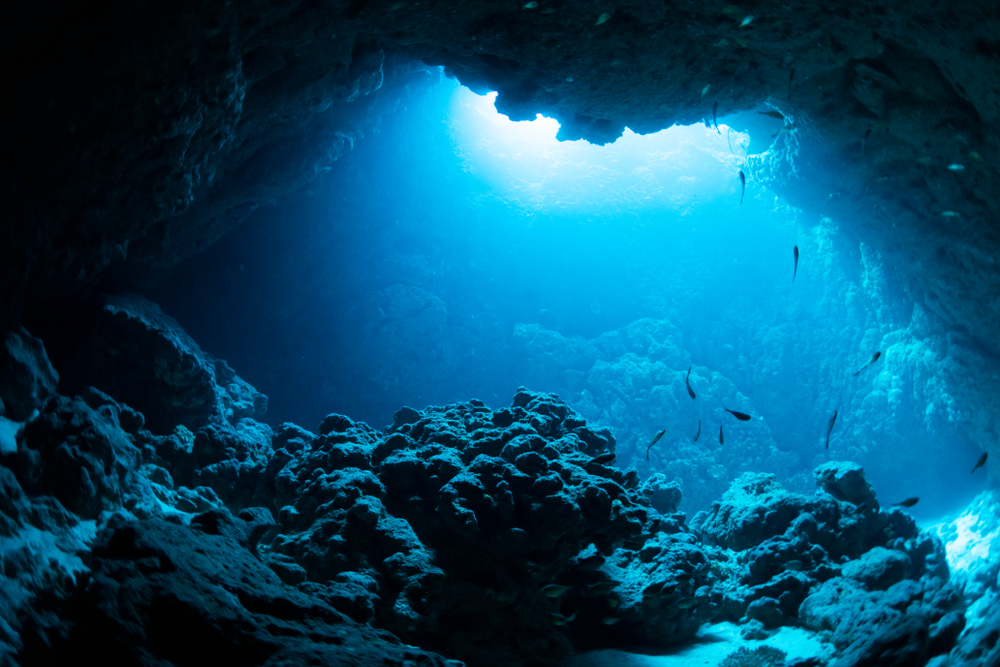
Lanternfish are small, deep-sea fish known for their widespread bioluminescence. These fish are equipped with photophores that emit a blue-green light, a common color in the deep sea. This glow serves multiple purposes, such as attracting mates, deterring predators, and communicating with other lanternfish. One of their most impressive adaptations is their ability to match the ambient light from above, effectively rendering them invisible to predators lurking below—a technique known as counter-illumination.
Despite their diminutive size, lanternfish play a significant role in the marine food web. They are one of the most abundant and widely distributed fish species in the ocean, serving as a crucial food source for larger marine animals like squid, dolphins, and seabirds. During the day, they dwell in deep waters, ascending to the surface at night to feed on plankton. This nightly migration is one of the largest on Earth, underscoring their importance in the ecosystem. The subtle glow of the lanternfish is a vital tool for survival in the vast, dark ocean depths.
5. The Spectacular Light Show of the Comb Jelly
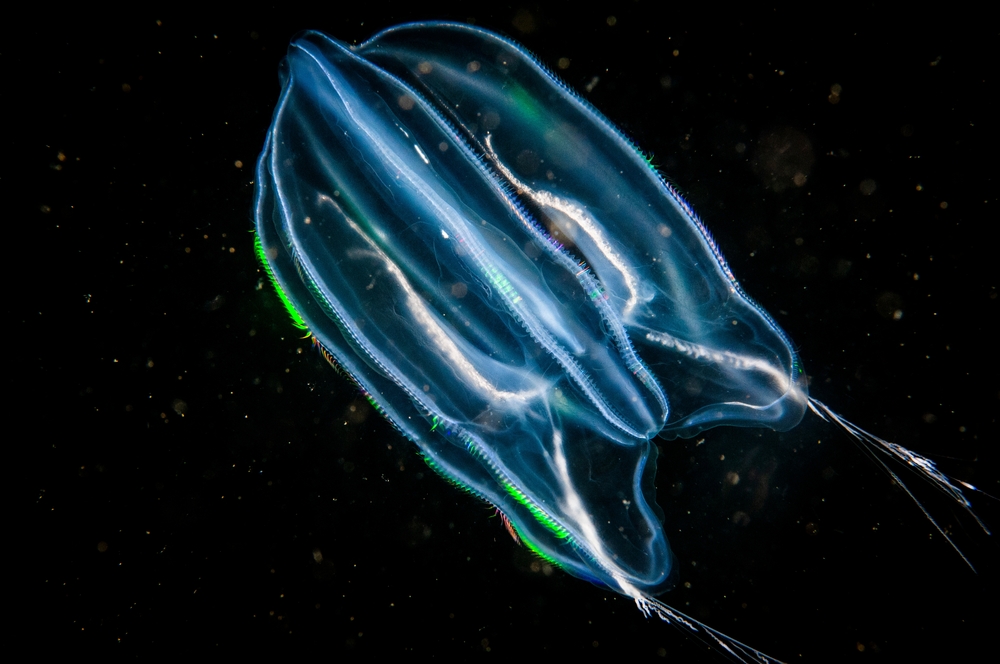
Comb jellies, or ctenophores, are not true jellyfish, but their captivating glow is equally mesmerizing. Unlike traditional bioluminescence, the light from a comb jelly is often a result of the refraction of light as it passes through their translucent bodies. These sea creatures have cilia, tiny hair-like structures, that beat rhythmically, creating a rainbow of colors. This iridescent light display is particularly visible when they move, as the cilia scatter the light in different directions.
In the deep sea, some comb jellies can produce their own light through bioluminescence, emitting flashes of blue and green to startle predators or attract prey. These creatures are fascinating not only for their beauty but also for their ecological roles. As both predators and prey, they play a significant part in the marine food chain. Some species have adapted to survive in the harshest of marine environments, demonstrating the resilience and diversity of life in the ocean. The comb jelly’s light show is a reminder of the wonders of the ocean and the delicate balance of its ecosystems.
6. The Glowing Predator: Dragonfish
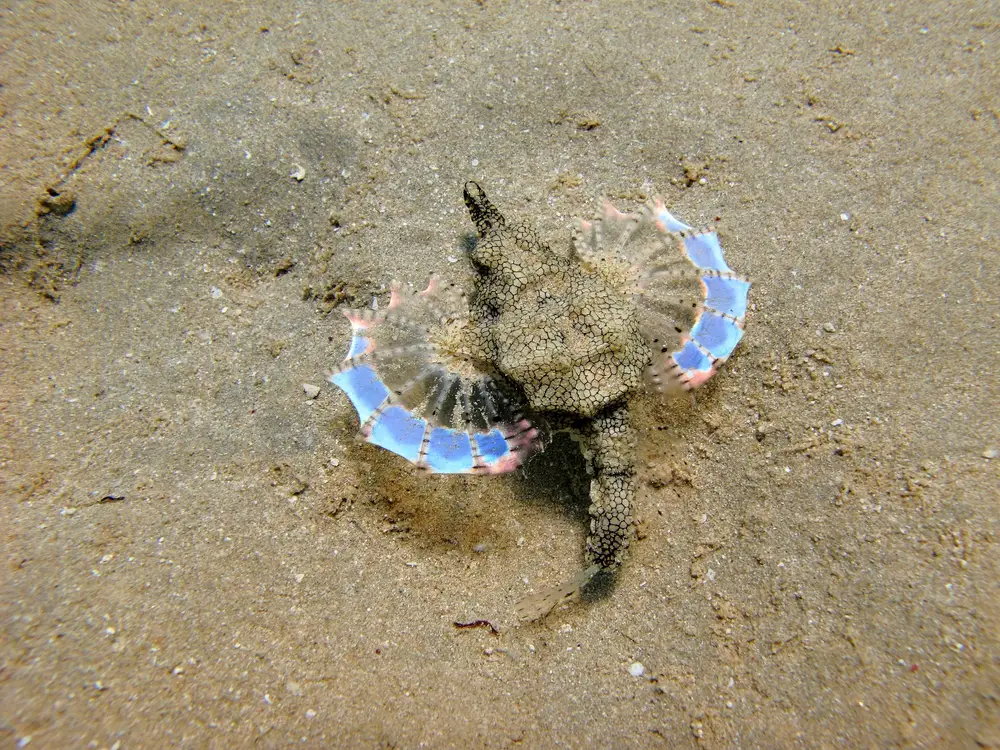
The dragonfish, with its intimidating appearance and ferocious name, is a bioluminescent marvel of the deep sea. Found in the ocean’s twilight zone, these creatures have light-producing organs called photophores along their bodies. This ability to glow serves multiple purposes, including attracting prey and deterring predators. Their most unique feature is the barbell, a light-emitting filament that dangles from their chin, which they use to lure prey closer.
Dragonfish have adapted to the extreme conditions of the deep sea, where sunlight does not penetrate. Their bioluminescence is crucial for communication and hunting in this dark environment. The light emitted by dragonfish is often red, which is unusual in the ocean as many deep-sea creatures are blind to red light. This gives the dragonfish a distinct advantage, allowing them to see prey that cannot see them in return. Their glowing capabilities highlight the intricate adaptations marine life has developed to thrive in the ocean’s depths.
7. The Dazzling Light Show of the Atolla Jellyfish
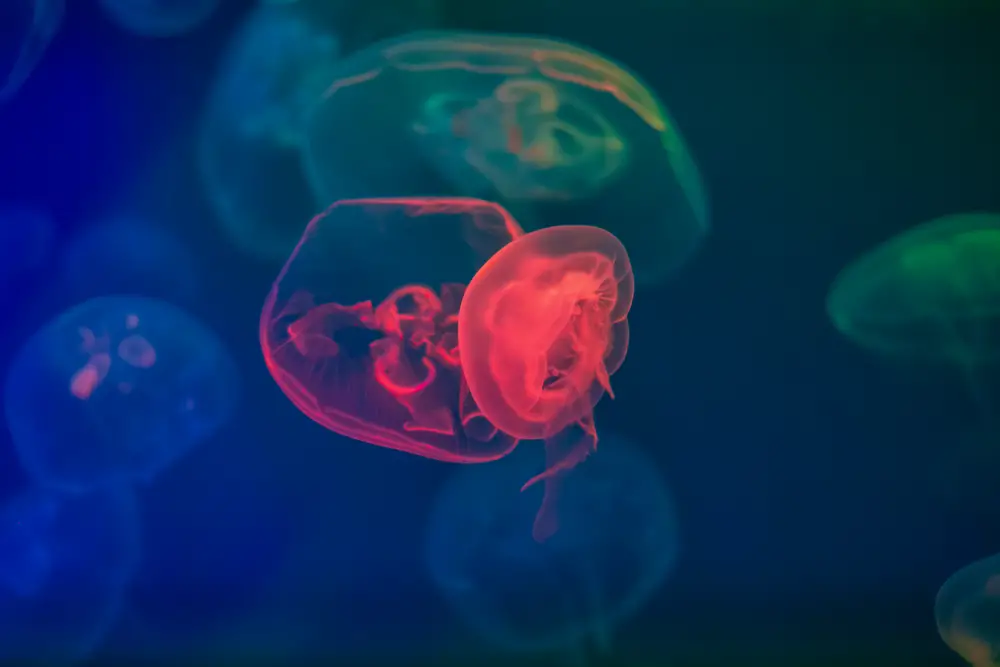
The Atolla jellyfish, also known as the alarm jellyfish, is a deep-sea dweller known for its distinctive crown-like shape and bioluminescent display. When threatened, it emits a series of flashing lights that are thought to act as a distress signal, attracting larger predators to its attacker. This unique defense mechanism is an example of how bioluminescence is used for more than just attracting prey or mates.
These jellyfish inhabit the deep ocean, where light is scarce, making their bioluminescent displays all the more striking. The lights are produced by specialized cells called photocytes, which can be activated in a rapid sequence, creating a pulsating effect. The ability to produce such a display is not only a defensive strategy but also a testament to the diverse uses of bioluminescence in the animal kingdom. The Atolla jellyfish’s light show is a brilliant example of nature’s ingenuity in survival tactics.
8. The Mysterious Light of the Deep-Sea Hatchetfish
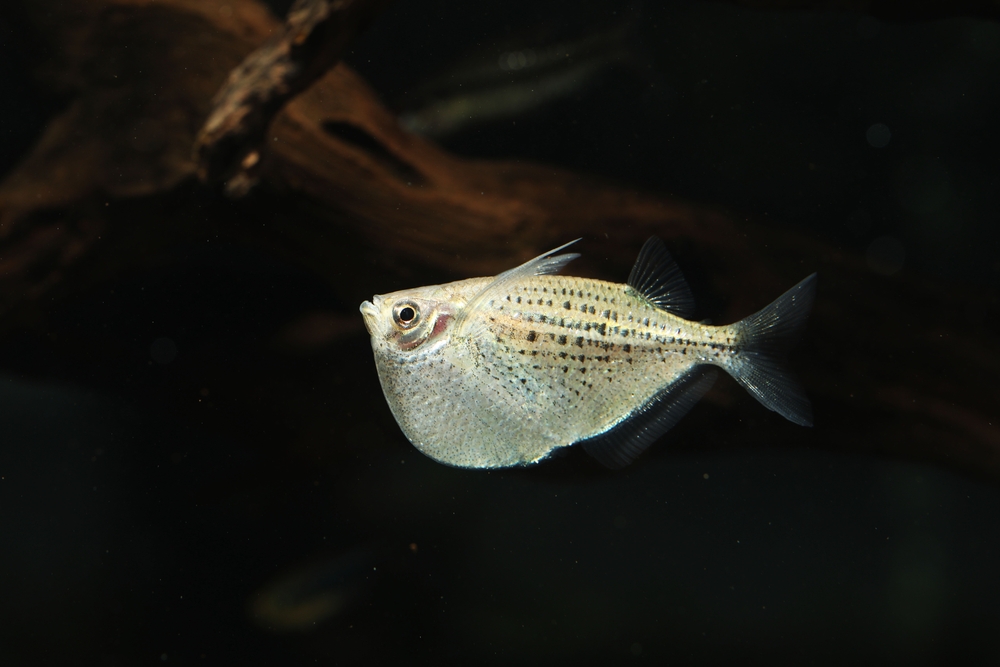
The deep-sea hatchetfish is another fascinating example of marine bioluminescence. These small fish are known for their flattened bodies that resemble a hatchet, hence their name. They possess photophores on their undersides, which they use for counter-illumination, blending in with the faint light from above to avoid predators below. This adaptation is crucial for surviving in the predator-laden depths of the ocean.
Hatchetfish can control the intensity and color of their light, allowing them to match the ambient light conditions in the water. This ability makes them virtually invisible to predators, providing a significant survival advantage. These fish are found in deep ocean waters around the world, indicating the widespread nature of bioluminescence among deep-sea species. The hatchetfish’s glow is a testament to the evolutionary adaptations that enable life to thrive in even the most challenging environments.
9. The Camouflaging Glow of the Pinecone Fish
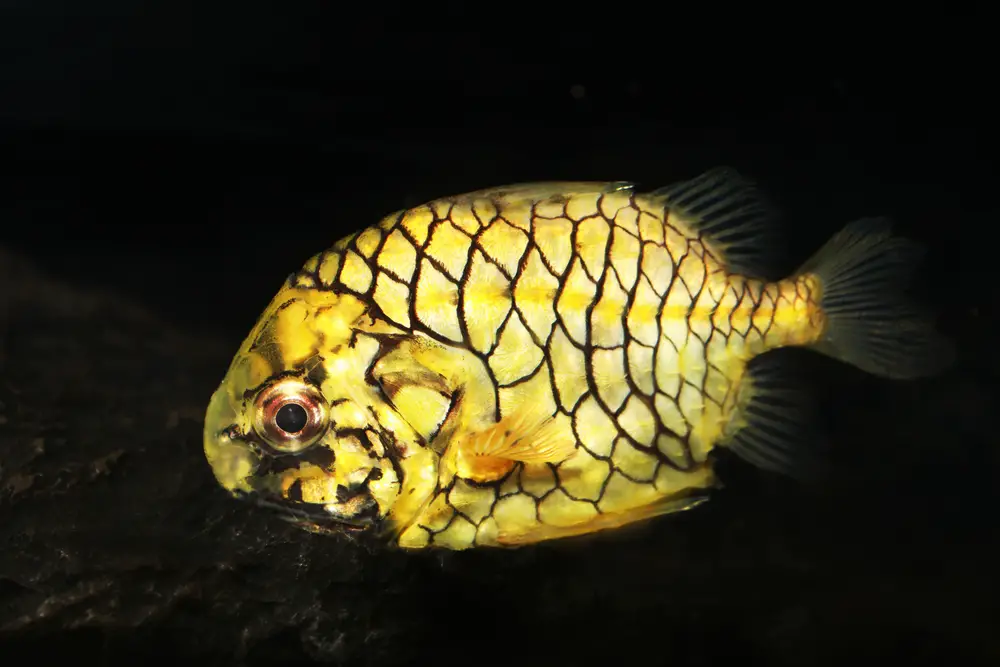
The pinecone fish, named for its armored, pinecone-like appearance, is a bioluminescent marvel found in the Pacific and Indian Oceans. These fish possess photophores on their lower jaw, which produce a greenish light. The glow is used for navigation and communication, aiding them in finding food and recognizing fellow pinecone fish in the dark. This bioluminescent ability is especially beneficial for night hunting, as it illuminates their surroundings without revealing their presence to predators.
These fascinating creatures are often found in coral reefs, where their unique glow provides an advantage in the complex underwater landscape. The light emitted by their photophores can also help them blend into the ambient light of the reef, serving as a form of camouflage. The pinecone fish’s bioluminescence demonstrates the diverse ways in which marine animals utilize light for survival. Their glow is both a tool for survival and a captivating spectacle in the underwater world.
10. The Unseen Glow of the Deep-Sea Siphonophore
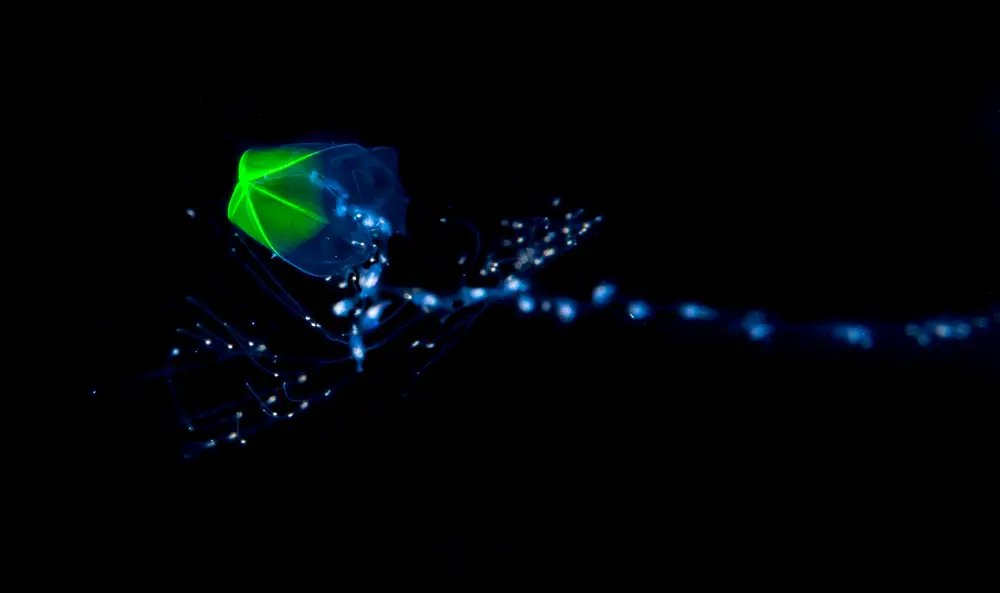
Siphonophores are a group of marine organisms that are closely related to jellyfish and corals, known for their remarkable bioluminescent abilities. These creatures are not a single organism but a colonial entity made up of specialized individuals called zooids. Each zooid performs a specific function, such as feeding or reproduction, and together they form a complex, glowing organism. Bioluminescence in siphonophores is used for defense, hunting, and communication, making them one of the ocean’s most intriguing luminescent creatures.
These colonial organisms can emit light in various colors and patterns, which can confuse predators and attract prey. The siphonophore’s glow is a fascinating example of cooperation and specialization in the animal kingdom. Despite their delicate appearance, they are highly efficient predators, using their glowing tentacles to capture prey in the dark depths of the ocean. The bioluminescence of siphonophores highlights the complexity and diversity of life in the ocean, showcasing the wonders of evolution in adapting to the challenges of the deep sea.
